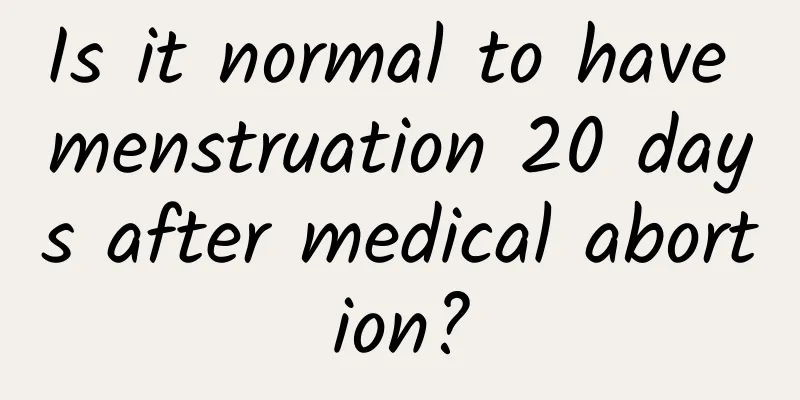Introduction to the Immature Uterus

|
Infantile uterus, also known as uterine hypoplasia, refers to a uterine structure and shape that is normal, but small in size and with a long cervix, which is an important reason for infertility. There are two common types of infantile uterus in clinical practice: one is the acne uterus, which is more common, with a ratio of the uterine cavity to the cervical canal of about 1:1; the other is the infantile type, with a ratio of the uterine cavity to the cervical canal of about 1:2, and is often accompanied by ovarian hypoplasia. The main symptoms of immature uterine disease are irregular menstruation, scanty menstruation, dysmenorrhea, infertility, uterus, etc. It depends on early detection and early treatment. Once a girl has her first menstruation at the age of over 16, her menstruation is very irregular, often for several months, with very little menstrual volume, or accompanied by abnormal color and severe abdominal pain during menstruation, she should be vigilant and go to a regular hospital for examination and treatment in time. Uterine hypoplasia involves many factors. First of all, it is mainly caused by endocrine disorders, especially insufficient secretion of estrogen and progesterone caused by ovarian dysfunction. Secondly, many adolescent girls cannot correctly view the changes in their body shape, and they mistake normal weight gain during adolescence for obesity and try to lose weight. However, losing weight requires limiting the intake of fatty foods, which affects the level of sex hormones in the body and affects the uterus. Again, some girls blindly pursue body beauty and over-tighten their waists, which obstructs blood circulation, and the uterus' development is hindered or even stops due to insufficient blood supply, eventually forming a childish uterus. In addition, adolescent malnutrition (such as anorexia) or chronic illness may affect the secretion of sex hormones, thereby affecting the development of sexual organs, including the uterus. TCM treatment is mainly based on syndrome differentiation and medication. There are 6 types of cases in clinic: 1) Weak spleen and stomach. Treatment is mainly based on strengthening the spleen and kidney. 2) Liver depression and kidney deficiency. Start with soothing the liver and tonifying the kidney. 3) Phlegm-dampness and kidney deficiency. You should exercise actively, and if your weight exceeds the normal standard, you should pay attention to losing weight. In addition, take Chinese medicine. 4) Blood deficiency and kidney deficiency. You should focus on supplementing nutrition, appropriately increase animal fat and protein, and add Chinese medicine. 5) Blood stasis and kidney deficiency. Appropriate early treatment and sequential estrogen and progesterone therapy should be used to restore the menstrual cycle to normal as soon as possible. 6) Cold solidified cell type. Attention should be paid to protection during menstruation, avoiding colds or eating raw and cold products. In addition, treatment should be combined with the traditional Chinese medicine Yugong Peilin Pills. |
<<: What is endometrial thickening?
Recommend
What does an egg-sized uterine fibroid look like? How big is an egg-sized uterine fibroid?
What does an egg-sized uterine fibroid look like?...
What is the difference between curettage and painless abortion? What are the harms of doing too much painless abortion to the body?
Painless abortion and uterine curettage are both ...
Irregular menstruation may also be a symptom of blood deficiency and qi stagnation
Irregular menstruation may also be a manifestatio...
What are the typical symptoms of perimenopausal syndrome? What exactly is perimenopausal syndrome?
Perimenopausal syndrome, also known as menopausal...
Understand the main symptoms of vulvar leukoplakia
Do you know how the symptoms of vulvar leukoplaki...
Can vaginal inflammation be cured?
Can vaginal inflammation be cured? 1. Vaginitis g...
Is it an ectopic pregnancy if the test paper shows one dark and one light? It could be pregnancy
I believe that those who have used pregnancy test...
Can irregular menstruation be cured? Take the right treatment
Women's menstrual disorders can actually be c...
Diet after cervical precancerous lesions surgery
What are the dietary principles for cervical prec...
A brief understanding of the common clinical symptoms of cervical hypertrophy
The symptoms of cervical hypertrophy can manifest...
What are the specific symptoms of cervicitis?
What are the specific symptoms of cervicitis? Cer...
Thin legs this way! 6 exercises to burn fat
Having a pair of well-proportioned legs is the dr...
Teach you some common ways to prevent cervical erosion
In recent years, the incidence of cervical erosio...
What is the reason for women's habitual miscarriage? We should actively look for the cause
Women who have habitual miscarriage should active...
Support domestic cattle! Taiwan Beef Carnival invites you to taste the fresh beef
The "2012 Taiwan Beef Carnival" was off...









